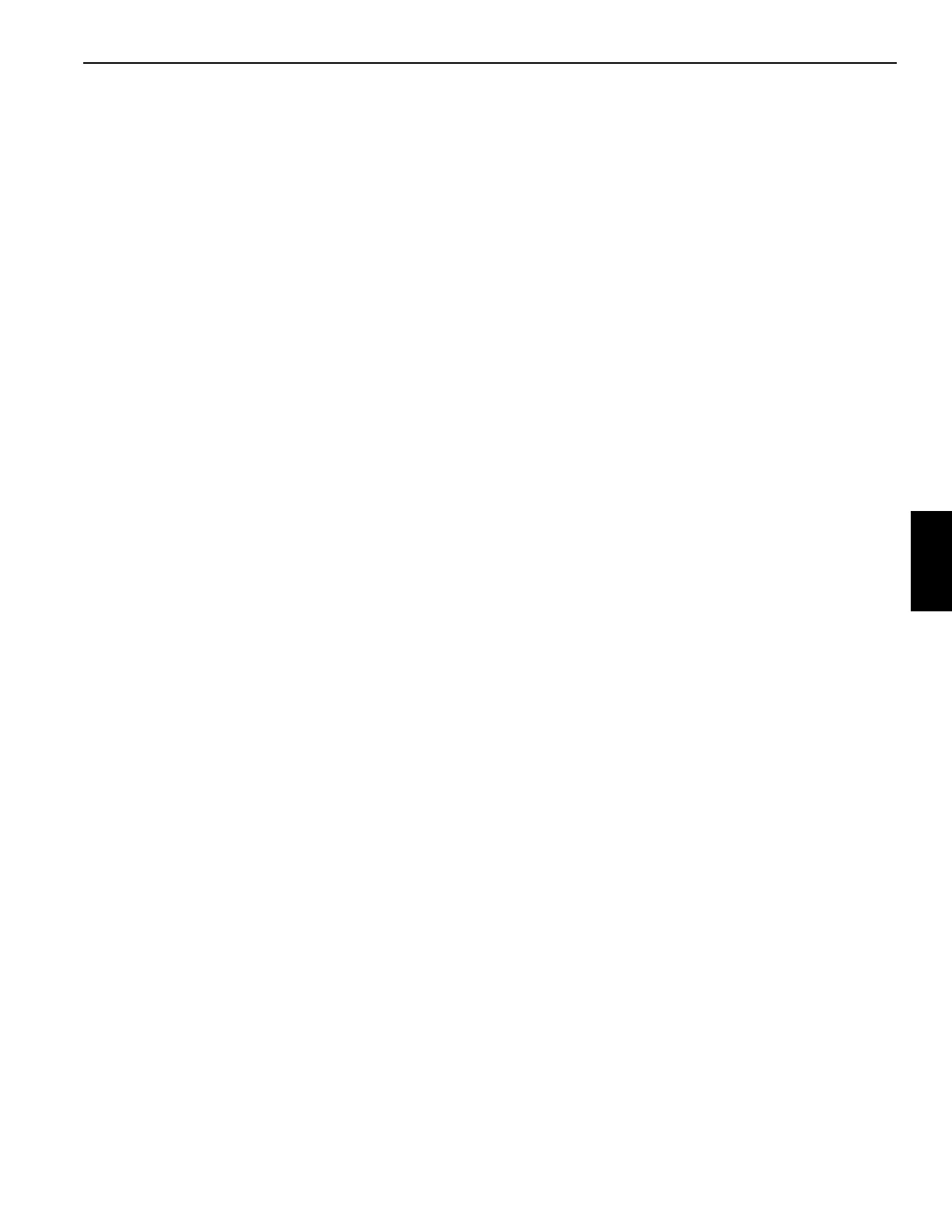Grove Published 11-22-2016, Control # 345-12 5-13
RT9130E-2 SERVICE MANUAL HOIST AND COUNTERWEIGHT
IDLER DRUM AND CABLE FOLLOWER
Description
The main and auxiliary hoists are equipped with an idler
drum (Figure 5-4) on the forward side of the hoist. The main
hoist idler drum is used to keep the hoist cable from coming
in contact with the boom.
When the crane is also equipped with an auxiliary hoist, the
idler drum on the auxiliary hoist is used to keep the hoist
cable from coming in contact with the main hoist. The cable
follower (Figure 5-4) is mounted on the rear side of its
respective hoist. The cable follower applies a downward
spring pressure against the cable onto the hoist drum, to
ensure that the cable will be uniformly wound onto the hoist
drum, and also prevent cable from jumping under abnormal
line conditions.
Maintenance
Idler Drum
Removal and Disassembly
1. Remove the bolt, washer, and lockwasher from the right
side of the idler roller.
2. Support the idler roller and withdraw the shaft from the
left side. Take care not to lose the dowel pin on the end.
3. Remove the roller from between the side plates.
Cleaning and Inspection
1. Clean all rust and dirt from the shaft.
2. Inspect the shaft and roller for cracks, scoring, or
grooving. Replace if necessary.
Assembly and Installation
1. Position the roller between the side plates
2. Install the shaft through the left side plate and the roller.
Ensure the flat on the shaft end aligns with the stop
welded on the side plate, align the dowel pin.
3. Secure the shaft to the right side plate with a bolt,
washer and lockwasher. Apply Loctite 243 to the bolt
threads.
Cable Follower
Removal And Disassembly
1. Loosen the adjusting nuts and remove the tension
spring and adjusting rod from both sides of the hoist.
2. Remove the tack welds from the bolt heads securing the
arm to the cable follower roller.
3. Remove and disassemble the cable follower roller as
follows:
a. For a cable follower roller that has bearings, support
the cable follower roller and remove the bolts and
washers securing the arms to the angles on each
end of the roller. Remove the cable follower roller.
Remove the two bolts and washers securing the
angle to the right side of the shaft. Remove the
shims and roller from the shaft. If necessary, remove
the bearing and bearing housing from both ends of
the roller.
b. For a cable follower roller that has bushings instead
of bearings, support the cable follower roller and
remove the bolts and washers securing the pivot
arms to the mounting brackets on each end of the
roller. Remove the cable follower roller. Remove
cotter pins and washers from roller shaft, then
remove mounting brackets from roller shaft.
4. Remove the bolt and locknut securing the arm to the
spring attaching lever on each side of the hoist. Remove
arms and levers from the side plates.
NOTE: Be sure to mark each arm and lever as to what side
(left or right) they were removed from. This will be
helpful during installation.
5. Remove grease fittings if present.
Cleaning and Inspection
1. Clean all grease from the shaft, bearings or bushings,
and roller.
2. Check the shaft, roller, and bearings or bushings for
cracks, scoring, or grooving. Replace if necessary.
3. Check the spring tension. If the springs will not provide
sufficient tension when adjusted, replace them.
Assembly and Installation
1. Install grease fittings if needed.
2. Install the left arm through the bushing on the left side
plate. Install left spring attaching lever on the arm and
secure with a bolt and locknut. Apply Loctite 243 to the
bolt threads.
3. Repeat step 2 on the right side.
4. For a cable follower roller that has bearings, assemble
the cable follower roller as follows:
a. Apply high strength retaining compound Loctite 680
to the bearing housings and the bearings. Install
them in both ends of the roller.
b. Install the shaft into the roller with a least one shim
on each end.
c. Apply Loctite 243 to the bolt threads. Position the
angle on the right side of the shaft and secure with
two bolts and washers.

